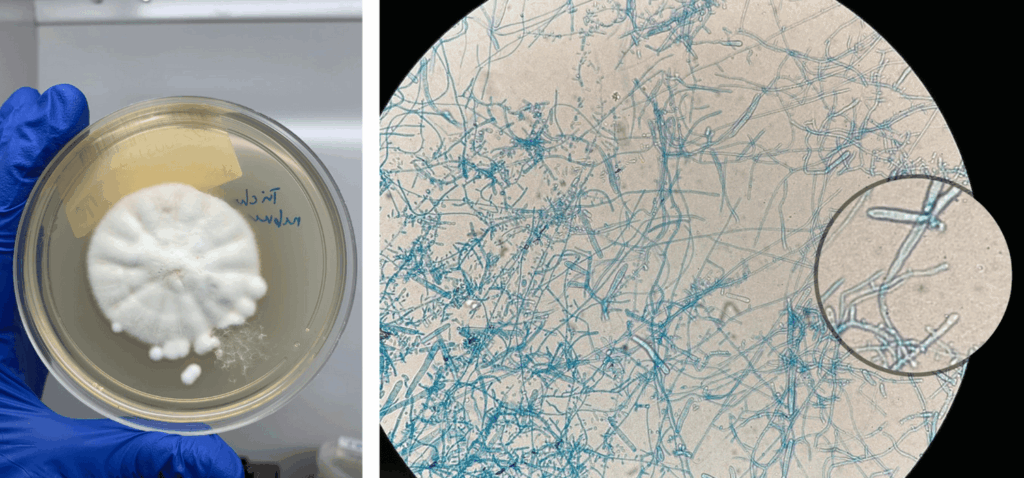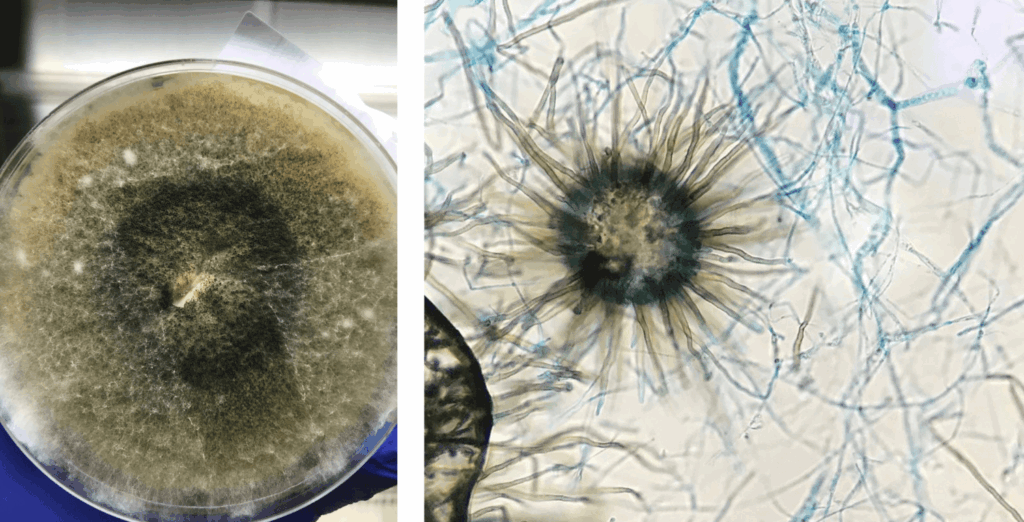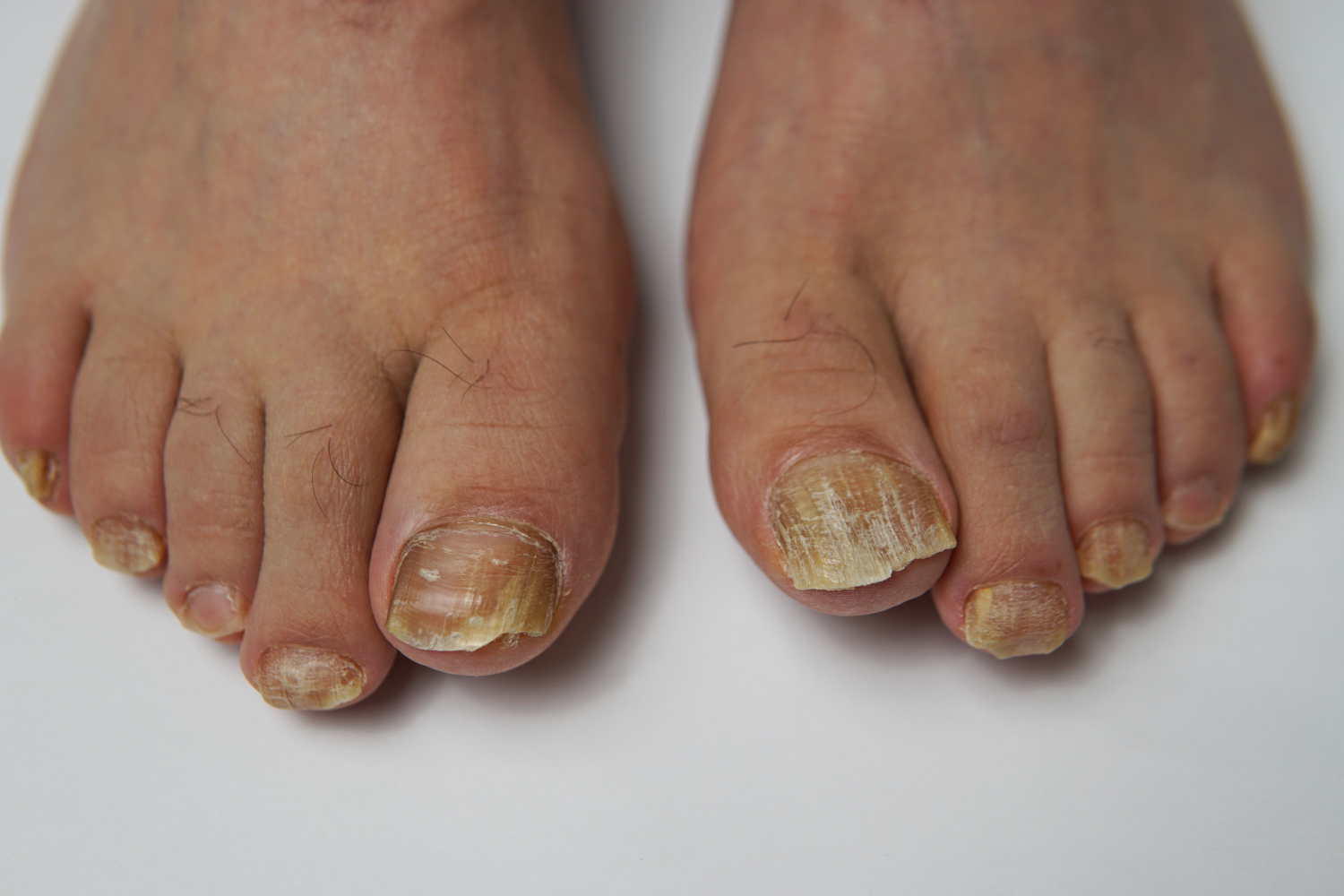Onychomycosis, commonly known as nail fungus. A prevalent condition that affects many individuals, particularly those with compromised immune systems or other predisposing factors. It is characterized by the infection of the nail bed, leading to discoloration, thickening, and often crumbling of the nail.

Onychomycosis is primarily caused by dermatophytes, though yeasts and non-dermatophyte molds can also be culpable. The most common dermatophyte responsible for this infection is Trichophyton rubrum, which thrives in warm and moist environments, making areas like public swimming pools and gyms hotspots for transmission. Furthermore, the likelihood of developing onychomycosis increases with age, as nails tend to grow slower and may become drier and more brittle.

The above image is a colony of Chaetomium spp., commonly found in soil and indoor environments and one of the important aetiological agent of onychomycosis.
It’s essential to note the importance of considering underlying conditions that may contribute to the development of onychomycosis. Patients with diabetes, peripheral vascular disease, or immunosuppression are at a higher risk, and any underlying health concerns must be managed concurrently. This integrated approach helps to prevent recurrence and ensures long-lasting results following treatment.
Onychomycosis is a common but often underdiagnosed condition among patients.
At LabLink Diagnostics, our laboratory is equipped with skilled lab personnels and advanced diagnostic tools to perform basic fungal as well as new generation diagnostics for fungal culture and identification. Timely and accurate diagnosis is critical for initiating appropriate antifungal therapy and can significantly improve the patient’s prognosis.
Contact us for more information on this fungal test.

